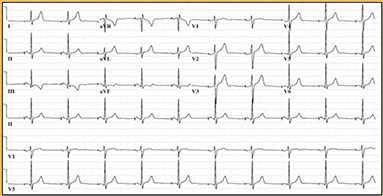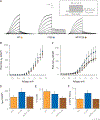The Promise and Peril of Precision Medicine: Phenotyping Still Matters Most
- PMID: 27810088
- PMCID: PMC6365209
- DOI: 10.1016/j.mayocp.2016.08.008
The Promise and Peril of Precision Medicine: Phenotyping Still Matters Most
Abstract
We illustrate the work necessary to reverse course after identification of a KCNQ1 variant interpreted erroneously as causing long QT syndrome (LQTS) and to identify the true cause of a case of sudden death in the young. Surrogate genetic testing of a decedent's living brother identified a rare KCNQ1-V133I variant, which prompted an implantable cardioverter defibrillator and subsequent diagnosis of LQTS in other family members. Subsequently, this presumed LQT1 family came to our institution for further clinical evaluation and research-based investigations, including KCNQ1-V133I variant-specific analysis of the decedent, heterologous expression studies of KCNQ1-V133I, and a whole-exome molecular autopsy along with genomic triangulation using his unaffected parents' DNA. After evaluating several V133I-positive family members, clinical doubt was cast on the veracity of the previously levied diagnosis of LQT1, resulting in a re-opening of the case and an intense pursuit of the lethal substrate. Furthermore, the decedent tested negative for V133I, and heterologous expression studies demonstrated a normal cellular phenotype for V133I-containing Kv7.1 channels. Instead, after whole-exome molecular autopsy, a de novo pathogenic variant (p.R454W) in DES-encoded desmin was identified. As detailed herein, the forensic evaluation of sudden death in the young requires meticulous focus on the decedent followed by a careful and deliberate assessment of the decedent's relatives. Surrogate genetic testing can have disastrous consequences and should be avoided. Genetic test results require careful scrutiny to avoid unintended and potentially devastating repercussions. Although the root cause of the decedent's tragic death would have remained a mystery, the unintended consequences for the living relatives described herein might have been avoided based on clinical grounds alone. All family members had electrocardiograms with normal QT intervals, making the diagnosis of familial LQTS unlikely. As such, if the clinicians caring for these patients had focused solely on clinical data from the survivors, there might have been no reason to embark on a path of inappropriate treatment based on genetic testing.
Copyright © 2016. Published by Elsevier Inc.
Conflict of interest statement
Potential Competing Interests: Dr Ackerman is a consultant for Boston Scientific, Gilead Sciences, Invitae, Medtronic, and St. Jude Medical. Mayo Clinic, Mr Tester, and Dr Ackerman have received sales-based royalties from Transgenomic for their FAMILION LQTS and FAMILION CPVT genetic tests. However, none of these entities contributed directly to this study in any manner.
Figures




Comment in
-
Phenotype is king, researchers say, after 20 family members have condition misdiagnosed.BMJ. 2016 Nov 2;355:i5884. doi: 10.1136/bmj.i5884. BMJ. 2016. PMID: 27806950 No abstract available.
References
-
- Mehra R Global public health problem of sudden cardiac death. J Electrocardiol. 2007;40(6):S118–S122. - PubMed
-
- Kung HC, Hoyert DL, Xu J, Murphy SL. Deaths: final data for 2005. Natl Vital Stat Rep. 2008;56(10):1–120. - PubMed
-
- Tester DJ, Ackerman MJ. Cardiomyopathic and channelopathic causes of sudden unexplained deaths in infants and children. Annu Rev Med. 2009;60:69–84. - PubMed
Publication types
Grants and funding
LinkOut - more resources
Full Text Sources
Other Literature Sources
Research Materials
Miscellaneous

